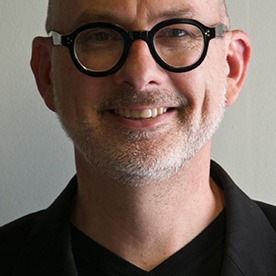search the Original Green Blog
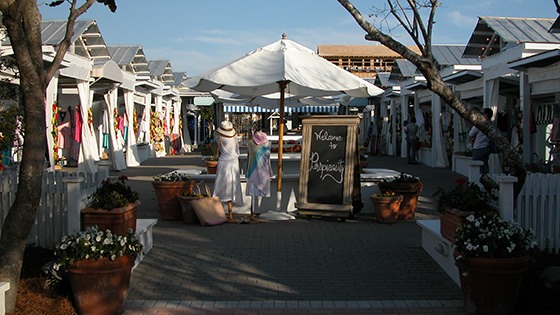
Seaside's Perspicasity bazaar is built of little more than plywood shacks with tin roofs
Building neighborhoods patiently requires far less debt for infrastructure and results in places that are more interesting than those that are built all at once. This was once the way we built everywhere, but it is now illegal all over. Why? Because cities insist on "seeing the end from the beginning," meaning that they want the developer to begin by building the final condition of the neighborhood. In human terms, it would be like deciding that we can no longer tolerate giving birth to a child that grows into an adult; we will only allow giving birth to an adult… an incredibly painful proposition that simply doesn't work.
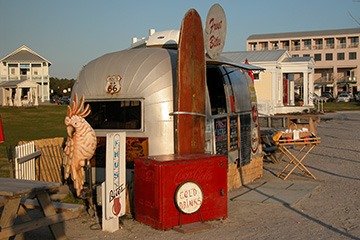
one of Seaside's food trailers that's still in its original place
Go to any great city or town that has been there for at least a couple centuries, and the buildings that make up the historic center are highly unlikely to be the ones that were originally built there. At the beginning, the buildings may have been little more than shacks that were replaced or transformed a few decades later into proper wood-frame buildings. A generation or two later, those detached buildings were likely replaced with the larger (and often attached) buildings we see today.
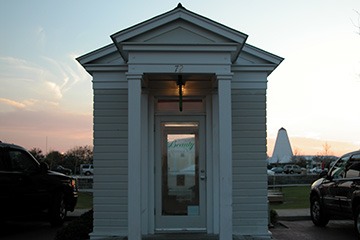
small buildings like this have moved all over Central Square
Seaside, Florida, designed by DPZ and the birthplace of the New Urbanism, is a good example of a place built this way, but only because there was no planning department to forbid it at the time. Streets were built one at a time; the next street didn't begin until the previous one was pretty much sold out. Originally, the paving was just crushed shells; it was covered several years later with the concrete pavers that are there today. The first building was a sharecropper's cottage that was hauled in from a farm several miles away. The first commercial buildings were shacks, sheds, and trailers. A few of them remain in their original locations, but most have been moved at least a time or two to make way for larger and more permanent structures.
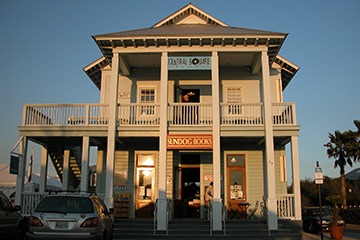
the Sundog Books building today
Seaside's town center is now in the process of being rebuilt in its climax condition of 3- to 5-story masonry buildings. A few are complete, but there are several more to come. Sundog Books started out in a simple one-story wood frame building. It moved several years ago to a two-story frame building on the square, but this building has always been slated to have its final home a couple blocks away as part of the neighborhood school. When it moves, it will be replaced with the masonry building that will house Sundog Books long into the future.

a masonry building like this will be Sundog's long-term home
Building this way allowed Town Founders Robert and Daryl Davis to build this world-famous town with essentially no debt after the infrastructure of the first street was paid off. Put another way, had they been expected to build Seaside's climax condition in 1980, it's highly unlikely that Seaside would have ever been built because it would not have been financed. Who ever heard of building a world-famous town on the Redneck Riviera amid the scraggly condos, t-shirt shops, and liquor stores that thinly populated this stretch of Highway 30-A back then? No banker in their right mind would have gone for such a proposition.
This is even more important today, with real estate development money as tight as it has ever been. The great places we love the most were usually built without real estate mortgages. Most places weren't more wealthy then than we are today; they simply built what they could afford at the time and then improved it in small increments over time. Cities and towns really need to learn this lesson again today… it just might make the difference between building and not building, and it will certainly create a better place.
~Steve Mouzon
PS: Here are some of the historical reasons we're in this mess, and these are the forces at work today to keep us that way.
Amendment: I meant to mention several groups in this post that are making significant strides on this issue: Tactical Urbanism is exploring all sorts of ways of improving places with no debt using available stuff. Strongtowns examines the ways infrastructure debt has spiraled out of control, and what to do about it. A number of architects and planners are exploring these ideas under the banner of Incremental Urbanism… their site was on Posterous, which is shutting down, but I'll post a link when they're back up. And the Sprawl Repair people are looking at how to incrementally salvage our biggest infrastructure investment, which is sprawl.


